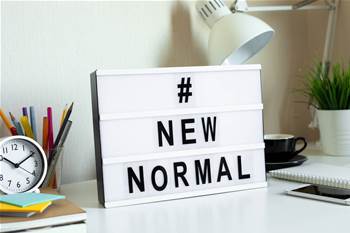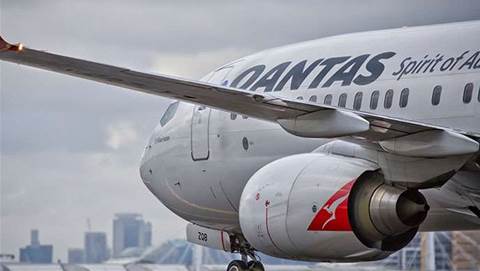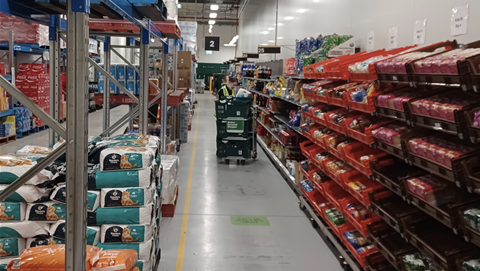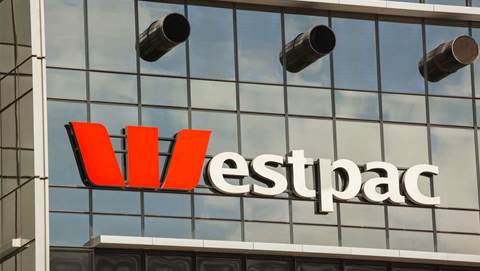Australia’s biggest companies are formulating what a return to physical office spaces will look like and what the change in work culture means for underlying technology systems.
Many expect to adopt a “hybrid” approach that mixes working from home or an office environment on a permanent basis, though there are significant variations between companies.
Telstra has had flexible working arrangements in place since March 2014 - affording it a head-start when it came to dealing with Covid.
But, like other companies with large communal office spaces across Australia, it is examining how the future of work will look.
“We’re planning what the future workplace experience will be for all of our people and this will be based on what they’ve said is most important to them,” Telstra’s Group Owner for Next Gen People Practices Julian Clarke told iTnews.
“For example, our people have said they would prefer to work from home around three days per week, compared to an average of 1.7 days prior to Covid, and the main reasons they would come into an office would be for social interactions and team collaboration so we’ll design our approach and our workplaces with this in mind.
“Around 90 percent believe they’re either the same or more productive working from home. The main reasons for this are no commute time, more flexibility with how they work, fewer distractions, and more time for exercise.
“As we plan our future workplace into 2021 and beyond, we’re also looking at what tools our people will need and making sure we create a consistent experience across all our locations - in Australia and internationally.”
Clarke said Telstra anticipates the ‘new normal’ working environment to be “flexible, safe, geographically dispersed, and offer a hybrid of digital and physical tools and spaces that are tailored to an individual’s role and their technology needs, preferences and expectations.”
“Work will be something you do, not somewhere you go. This won’t be a one size fits all approach – we want our people to choose to work in a way that best suits them.”
Clarke also said Telstra would invest in leadership and internal culture to support the permanent changes to ways of working.
“We’re investing significantly in change management and upskilling leaders in areas like virtual teaming (although many of our leaders already operated with geographically diverse teams),” he said.
Telstra also plans to use emerging technology to try to replicate some of the social and collaborative aspects of workplace culture that might otherwise be lost when employees spend a lot of time working remotely.
“The opportunity now is how we use technology to help fill the void of our need for rituals and connections in a physical workplace,” Clarke said.
“There are many technology opportunities to enhance remote working and make us feel like we are together. Many require more bandwidth, so 5G will become very important.
“For example, 360 degree cameras and VR glasses will create a feeling we are sitting in the same room. It might look a bit awkward to see each other wearing VR headsets, but it can be fixed.”
For people that do come into the office, Telstra has created a ‘myWorkplace app’ that “gives people the ability to book a desk before they come in ... so that we can maintain social distancing.”
“We’ll also add functionality next year so teams can book spaces to connect and collaborate in an office,” Clarke said.
Like Telstra, ANZ Banking Group has similarly agreed that the majority of staff will work flexibly “in a blended way - a couple of days each week in an ANZ workplace and a couple of days working remotely,” deputy CEO Alexis George told iTnews.
“There will be some teams or role-types that are best suited to working most of the time in an ANZ workplace due to the work they do and others that are better suited to working mainly remotely,” George said.
“The level of flexibility each person will have is anchored to the type of work they do and what works for their team.”
Wilson Group - best known for its car park and site security businesses - is in the process of redefining its use - and need - for office space.
“The actual office itself is undergoing a bit of a review,” chief information officer Jamie Newman told a recent Comscentre webinar.
“We're starting to change our approach, so instead of having one big central office in the middle of the city, do we have satellite offices spread around where if people need to go in a day a week or just need to engage, rather than having to make the big haul into the city they just drop into one of the local offices and jump onto one of the collaboration platforms?”
NAB has been busy deploying technology systems to aid its own staff in their transition to a hybrid work environment.
The bank has been preparing for a partial return to the office for several months, and has gone down the same path as Telstra in standing up an app that lets staff book desks to use.
In a recent Medium post, however, NAB’s tech team said it was working to improve the security of devices used remotely, and to make it easier to ship devices to new starters at the bank.
“Using a compatible Windows 10 laptop, colleagues will be able to enjoy almost instant login using facial recognition, both increasing security on devices and also providing a more convenient and faster login experience,” it said.
“We will [also] be shipping new PCs to new starters directly. The entire set up process then takes place over the cloud (online) - ordering, software setup, updates, and issues resolution are all done remotely and immediately.”




.png&h=140&w=231&c=1&s=0)





















